What is Sleep Apnea? A Comprehensive Guide to Types, Symptoms, Causes, and Treatment
What is Sleep Apnea?
Sleep apnea is a sleep disorder in which a person’s breathing repeatedly stops and starts during sleep. These breathing pauses (apneas) can last from a few seconds to half a minute and may occur dozens or even hundreds of times per night. Each time an apnea happens, the body experiences a drop in oxygen and rise in carbon dioxide ([FDA Approves First Medication for Obstructive Sleep Apnea | FDA]), triggering a brief arousal (awakening) to resume breathing. Often, the person is unaware of these micro-awakenings, but their sleep is disrupted and less restorative. The brain’s reflex to wake you starts breathing again ([FDA Approves First Medication for Obstructive Sleep Apnea | FDA]) – a life-saving mechanism – but it prevents deep, restful sleep and places stress on the body ([Study Identifies First Drug Therapy for Sleep Apnea]) ([Study Identifies First Drug Therapy for Sleep Apnea]). If untreated, sleep apnea can lead to serious health problems (which we’ll discuss later).
Sleep apnea affects multiple body systems. The repeated oxygen deprivation and sleep interruption strain the cardiovascular system and can alter metabolic and cognitive functions【18†L213-L218 ([FDA approves next-generation Inspire V therapy system]). It’s a common condition – one estimate suggests about 1 billion adults worldwide may have obstructive sleep apnea to some degree 【14†L439-L447】 – yet many people don’t know they have it, since it occurs during sleep and often the bed partner is the first to notice the signs (like loud snoring or pauses in breathing) ([FDA approves next-generation Inspire V therapy system]).
Types of Sleep Apnea
There are three main types of sleep apnea, distinguished by their causes:
- Obstructive Sleep Apnea (OSA): This is the most common form of sleep apnea. In OSA, the airway collapses or becomes blocked during sleep. It occurs when the muscles in the back of the throat relax too much, causing the soft tissues (like the tongue and soft palate) to sag and obstruct the airway. Essentially, the throat intermittently closes off and stops airflow ([The 5 Biggest Sleep Apnea and CPAP Advancements of 2024]) despite the person’s effort to breathe. OSA often causes loud snoring, and the person may choke, gasp, or snort when their breathing restarts.
- Central Sleep Apnea (CSA): This form is less common. In CSA, the airway is open but breathing stops because the brain fails to send proper signals to the breathing muscles. In other words, there’s no blockage, but the respiratory drive from the brain intermittently pauses. Central sleep apnea is often associated with underlying medical problems (like neurological disorders, heart failure, or stroke) or can be triggered by sleeping at high altitude. Snoring may be absent or mild in pure CSA, since the issue is not an anatomical blockage.
- Complex (Mixed) Sleep Apnea Syndrome: Also called treatment-emergent central sleep apnea, this type combines features of both OSA and CSA. It may be identified when someone who appears to have OSA is being treated (for example, with a CPAP machine) but still experiences central apneas. In some cases, what looks like pure OSA can, upon closer study, turn out to have a central component – hence “complex” sleep apnea ([Sleep apnea - Diagnosis and treatment - Mayo Clinic]) ([Sleep apnea - Diagnosis and treatment - Mayo Clinic]). Someone with this syndrome has obstructive events that convert into or coexist with central events, especially during treatment.
Figure: In obstructive sleep apnea, relaxation of throat muscles causes the airway to collapse or become blocked during sleep (bottom image), compared to a normal open airway (top). This blockage stops airflow (blue arrows) from reaching the lungs ([Obstructive sleep apnea - Symptoms and causes - Mayo Clinic]) ([Obstructive sleep apnea - Symptoms and causes - Mayo Clinic]). The brain senses the drop in blood oxygen and briefly wakes the person, prompting them to tighten the airway muscles and resume breathing, often with a gasp or snort. These repeated interruptions fragment sleep and oxygen delivery to the body’s organs.
Signs and Symptoms
Sleep apnea can manifest through a variety of signs and symptoms, many of which are first noticed by a bed partner or family member ([Central sleep apnea - Symptoms and causes - Mayo Clinic]) ([Central sleep apnea - Symptoms and causes - Mayo Clinic]). Common symptoms include:
- Loud, chronic snoring – especially in OSA (snoring may be quieter or absent in CSA).
- Episodes of paused breathing during sleep ([Sleep apnea - Diagnosis and treatment - Mayo Clinic]) ([Sleep apnea - Diagnosis and treatment - Mayo Clinic]). These may be followed by choking, gasping, or snorting sounds when breathing restarts.
- Gasping or choking awakenings – suddenly waking up feeling short of breath or like you’re suffocating ([Sleep Apnea: What It Is, Causes, Symptoms & Treatment]) ([Sleep Apnea: What It Is, Causes, Symptoms & Treatment]).
- Excessive daytime sleepiness – feeling very drowsy, fatigued, or nodding off during the day (at work, while watching TV, or even when driving). This results from the repeated arousals at night ([Types of sleep apnea: Obstructive, central, and complex]), even if you don’t remember them, preventing deep sleep.
- Morning headaches – waking up with a headache, which can be due to oxygen deprivation and disturbed sleep.
- Dry mouth or sore throat in the morning – a dry mouth often comes from frequent open-mouth breathing during sleep ([FDA Approves First Medication for Obstructive Sleep Apnea | FDA]) ([FDA Approves First Medication for Obstructive Sleep Apnea | FDA]).
- Difficulty concentrating, memory problems, or irritability – cognitive impairment and mood changes can occur because poor sleep affects brain function ([Study Identifies First Drug Therapy for Sleep Apnea]).
- Insomnia – some people with sleep apnea struggle to stay asleep or have very fragmented, restless sleep.
- Nocturia (frequent nighttime urination) – waking often to urinate can be associated with sleep apnea as well.
Note: Not everyone who snores has sleep apnea ([FDA approves next-generation Inspire V therapy system]) ([FDA approves next-generation Inspire V therapy system]), and not everyone with sleep apnea snores. However, loud snoring especially when punctuated by silent pauses and gasps is a strong indicator of OSA. If you or your partner notice any of these symptoms – loud snoring, choking awakenings, observed apneas, or severe daytime sleepiness – it’s important to talk to a healthcare provider ([LCD - Hypoglossal Nerve Stimulation for the Treatment of Obstructive Sleep Apnea (L38307)]). These symptoms warrant a medical evaluation, as untreated sleep apnea can have significant health consequences.
Causes and Risk Factors
Sleep apnea can affect anyone – even children – but certain causes and risk factors make it more likely ([The 5 Biggest Sleep Apnea and CPAP Advancements of 2024]) ([The 5 Biggest Sleep Apnea and CPAP Advancements of 2024]). The causes differ slightly between obstructive and central sleep apnea, so we’ll address each in turn.
Obstructive Sleep Apnea (OSA): The immediate cause of OSA is the physical collapse of the airway during sleep. When you fall asleep, especially during deeper stages, the muscles of your throat naturally relax. In people with OSA, these muscles (supporting the soft palate, uvula, tongue, and throat walls) relax excessively, causing the airway space to narrow or close. Trying to breathe through a collapsed airway leads to a drop in blood oxygen and a buildup of CO₂, until the brain detects the problem and briefly wakes you to reopen the airway. This cycle can repeat dozens of times an hour.
Several anatomical and lifestyle factors can predispose someone to OSA:
- Excess body weight (obesity): This is one of the strongest risk factors. Fat deposits around the neck and upper airway can put pressure on the throat, making it more prone to collapse. People who are overweight or obese have a significantly higher risk of OSA. (Conditions associated with weight gain, like hypothyroidism or polycystic ovary syndrome, may also contribute to OSA.)
- Neck circumference and anatomy: A thicker neck or a naturally narrow throat can mean a narrower airway. Some people have structural features (often hereditary) such as a recessed chin, enlarged tonsils, large tongue, or deviated nasal septum that crowd the airway. Enlarged tonsils/adenoids are a common cause of OSA in children.
- Age: OSA can occur at any age, but it becomes more common as people get older. The risk increases in middle age and tends to level off in the elderly. Muscle tone decreases with age, which may contribute to airway collapse.
- Male gender: Men are 2–3 times more likely to have OSA than premenopausal women. After menopause, a woman’s risk approaches that of a man’s. Hormonal and fat distribution differences likely play a role.
- Family history and genetics: Having relatives with sleep apnea increases your risk, suggesting a genetic or familial component (possibly related to inherited throat structure or weight tendencies).
- Smoking and alcohol use: Smoking can cause inflammation and fluid retention in the airway, increasing OSA risk. Alcohol, sedatives, or tranquilizers relax throat muscles further during sleep, making airway collapse more likely. (Even one drink near bedtime can worsen OSA in susceptible individuals.)
- Chronic nasal congestion: Difficulty breathing through your nose (due to allergies, sinus problems, or anatomical issues) is associated with a higher risk of OSA. Nasal congestion means you’re more likely to sleep with mouth open and may reduce airway pressure, promoting collapse.
- Medical conditions: OSA is more common in people with high blood pressure. There’s also an observed link between OSA and conditions like type 2 diabetes and asthma, though the relationships are complex (OSA might worsen these conditions or vice versa).
Central Sleep Apnea (CSA): In central sleep apnea, the issue is not a blocked airway but rather a failure of the brain’s respiratory control center. The brainstem normally controls breathing automatically. In CSA, the brain intermittently doesn’t send the signal to breathe, so the person makes no effort to inhale for brief periods. There are different subtypes of CSA (often categorized by their causes), including CSA related to heart failure or stroke (Cheyne-Stokes breathing), opioid medication use, high altitude, and idiopathic (no identifiable cause). Key risk factors for central apnea include:
- Heart disorders: Heart failure and atrial fibrillation (an irregular heart rhythm) are strongly linked with CSA. Cheyne-Stokes respiration – a periodic breathing pattern – is commonly seen in heart failure patients and is a form of CSA.
- Stroke or brain injury: A prior stroke, brain tumor, or other structural brainstem lesion can disrupt the normal respiratory drive and lead to CSA. Any neurological disease affecting the brainstem (where breathing is regulated) can cause central apneas.
- Age and gender: Older adults (especially over 60) have a higher risk of CSA. CSA is also more common in men than women. These parallels to OSA may be due in part to the higher prevalence of heart disease in older men.
- High altitude: Sleeping at very high altitude (where oxygen is thin) can induce a form of central apnea called high-altitude periodic breathing. This is usually temporary and resolves after returning to lower altitude.
- Opioid use: Taking opioid pain medications (like morphine, oxycodone, etc.) can depress breathing and contribute to central sleep apnea.
- Treatment-emergent CSA: As mentioned under complex sleep apnea, some people with OSA develop central apneas when on CPAP therapy. This indicates overlapping mechanisms in certain individuals.
Understanding whether a person’s apneas are obstructive or central (or both) is important, because it guides the appropriate treatment approach.
Diagnosis
Diagnosing sleep apnea typically involves specialized sleep testing and a thorough evaluation by a healthcare provider. Because many symptoms occur during sleep, you might not be aware of all your signs – often a partner’s observations or risk factor assessment raises suspicion. If sleep apnea is suspected, a doctor will recommend a sleep study to confirm the diagnosis.
The standard diagnostic test is a polysomnogram (PSG), commonly known as an overnight sleep study. This test is usually done overnight in a sleep lab or clinic, where you sleep hooked up to sensors. The equipment will monitor your brain waves, breathing pattern, blood oxygen level, heart rate, and body movements throughout the night. The data can show how many times you stopped breathing or had shallow breaths, and whether those correspond to arousals from sleep. If central sleep apnea is suspected (for instance, based on medical history or a lot of observed apneas without snoring), an in-lab polysomnogram is preferred over home tests, because it can distinguish obstructive from central events by measuring respiratory effort and brain activity.
There are also home sleep apnea tests available for certain cases. These are simplified devices you use in your own bed, usually measuring airflow, oxygen saturation, and breathing effort for one night. Home tests are more convenient and can diagnose moderate-to-severe OSA fairly well, but they have limitations – for example, they typically cannot reliably diagnose CSA. If a home test comes back negative but symptoms strongly suggest sleep apnea, a full lab test may still be needed.
After the sleep study, the results will quantify the severity of your condition. Doctors use the Apnea-Hypopnea Index (AHI) – the number of apneas (full stops in breathing) and hypopneas (partial reductions in airflow) per hour of sleep – to classify how severe the sleep apnea is. In adults, an AHI of 5–14 events/hour is mild, 15–29 is moderate, and 30 or more is severe sleep apnea. For example,Scrapy an AHI of 30 means the person had their breathing impaired 30 times each hour on average, which explains why their sleep quality is so poor.
In addition to the AHI, the sleep study report will note oxygen desaturation levels, sleep stages, and whether positions (like back-sleeping) worsened the apnea. All of this helps in planning treatment. Sometimes, part of the overnight study may include a CPAP titration – where the patient is put on a CPAP device partway through the night to find a pressure that alleviates the apneas – if OSA is observed. This can expedite starting treatment.
Tip: If you suspect you have sleep apnea, it can be helpful to bring information to your doctor. For instance, recording yourself sleeping (audio or video) to capture snoring and breathing pauses, or keeping a sleep diary of symptoms, can provide useful clues. But definitive diagnosis still requires the overnight monitoring described above.
Treatment Options
The good news is that sleep apnea is treatable, and there are several effective options available. The appropriate treatment often depends on the type of sleep apnea (OSA vs CSA) and the severity of the condition, as well as patient-specific factors (such as anatomy, tolerance for devices, and underlying health issues). Often a combination of therapies yields the best results. Here we break down the main treatment approaches:
-
Lifestyle Changes and Conservative Measures: For milder cases of obstructive sleep apnea, doctors may first recommend lifestyle modifications. These include:
- Weight loss: If you are overweight, even a modest reduction in weight can significantly improve OSA, as it reduces fat around the neck and abdomen. In some cases of moderate OSA, substantial weight loss can even resolve the apnea.
- Exercise and diet: Regular physical activity and a healthy diet can help with weight and improve cardiovascular fitness, potentially reducing apnea severity.
- Sleep position: Avoiding sleeping on your back (supine position) can prevent the tongue and soft palate from collapsing backward. Some people have much better breathing when they sleep on their side. Special pillows or positional therapy devices can help keep you off your back.
- Avoid alcohol and sedatives: Since alcohol and tranquilizers relax throat muscles, not using these in the evenings can lessen OSA events. Similarly, smoking cessation can reduce airway inflammation.
- Treat nasal congestion: Using nasal sprays or allergy treatments, or even devices like nasal dilators, to ensure you can breathe through your nose at night may help reduce OSA severity if nasal blockage is an issue.
- Continuous Positive Airway Pressure (CPAP): The first-line treatment for moderate to severe OSA is usually nightly use of a CPAP machine. CPAP is a small pump that delivers air at a constant positive pressure through a mask worn over the nose and/or mouth. The gentle air pressure acts as an “air splint” to keep the throat openduring sleep. This prevents the airway from collapsing, thereby preventing apneas and snoring. CPAP has a very high success rate in eliminating obstructive breathing events when used correctly. Many people notice a dramatic improvement in daytime alertness and how they feel once their sleep apnea is treated with CPAP. However, CPAP only works if you use it consistently – it can be a bit cumbersome, and some patients struggle with mask comfort or the sensation of pressure. Working closely with a sleep technician to adjust the mask fit and pressure settings can usually overcome these issues. Modern CPAP machines are quiet and often have features like heated humidifiers to improve comfort.
- Other Airway Pressure Devices: If standard CPAP is hard to tolerate, there are alternatives. Auto-adjusting positive airway pressure (APAP) machines can automatically vary the pressure throughout the night based on your needs, which some find more comfortable. There are also BiPAP or BPAP devices (bilevel positive airway pressure) that provide a higher pressure when you inhale and a lower pressure when you exhale. BiPAP is sometimes used for people who need higher pressure support or have co-existing breathing issues (like some CSA cases or chronic lung disease). Your sleep doctor will determine if an alternative device is appropriate, based on your sleep study and tolerance.
- Oral Appliances: These are custom-made mouthpiece devices that you wear during sleep to help keep the airway open. The most common type is a mandibular advancement device (MAD), which fits like a sports mouthguard and holds the lower jaw and tongue slightly forward. By advancing the jaw, it enlarges the space at the back of the throat, reducing obstruction. Oral appliances can be effective for mild to moderate OSA, especially in people who snore heavily. They are less effective than CPAP for severe apnea, but some patients prefer them for comfort or portability. These devices are typically fitted by a dentist with expertise in sleep medicine. It may take a few adjustments to get the fit right. Oral appliances can cause some jaw or tooth discomfort or bite changes in the long term, so regular dental follow-up is important. Note: Oral appliances are not used for central sleep apnea, since they target the obstructive mechanism.
-
Surgery (for OSA): Surgical interventions may be considered if other treatments fail or in specific anatomical situations. Surgery is usually a secondary option (except perhaps in children with large tonsils, where removing the tonsils can cure OSA). There are various surgical procedures aimed at enlarging the airway or reducing tissue collapse:
- Uvulopalatopharyngoplasty (UPPP): This procedure removes and/or reshapes excess tissue in the throat – trimming the soft palate and uvula, and often removing the tonsils and adenoids. The goal is to widen the airway opening. UPPP can help reduce snoring, but its success in completely resolving OSA is limited (it’s generally less effective than CPAP).
- Tonsillectomy or adenoidectomy: For children (and some adults) with very large tonsils or adenoids blocking the airway, surgical removal can significantly improve OSA. This is often the first-line treatment in pediatric OSA.
- Nasal surgery: Procedures such as a septoplasty (to straighten a deviated nasal septum) or turbinate reduction can improve airflow through the nose, which may help OSA symptoms or CPAP tolerance in those with nasal obstruction. By itself, fixing nasal issues might not eliminate OSA, but it can be part of a comprehensive approach.
- Jaw advancement (Maxillomandibular advancement): This is a more invasive surgery where the upper and/or lower jaw bones are moved forward surgically. By repositioning the bony framework, the space behind the tongue and soft palate is enlarged, making airway collapse less likely. This surgery has a relatively high success rate for OSA but involves significant recovery time. It’s usually reserved for severe cases or specific craniofacial structures.
- Implants or tissue stiffening: A less common treatment involves implanting stiff polyester rods into the soft palate (sometimes called the Pillar procedure) to stiffen it and reduce collapsibility. Radiofrequency ablation can also be used to shrink or stiffen excess tissue in the soft palate or tongue base. These minor procedures are typically for snoring and mild OSA; more research is needed to verify their long-term effectiveness.
- Hypoglossal nerve stimulation: This is a newer surgical option for moderate-to-severe OSA. It involves implanting a small device (similar to a pacemaker) that stimulates the hypoglossal nerve, which controls tongue movement. The device senses when you’re inhaling and sends a gentle pulse to move the tongue forward, preventing it from blocking the airway. Patients can turn it on at night with a remote. Hypoglossal nerve stimulators (e.g., Inspire device) have shown promising results for patients who cannot tolerate CPAP, significantly reducing apnea events in many cases. Not everyone is a candidate – it’s generally for OSA patients who are not obese and have anatomy suitable for the implant – but it represents an exciting advance in OSA treatment.
- Tracheostomy: This is a last-resort surgery for the most severe cases of OSA, when other treatments have failed. A tracheostomy creates a direct opening in the windpipe (trachea) at the neck. A tube is placed so that during sleep, the patient can breathe through the neck opening, bypassing the blocked upper airway. While it is almost always effective for eliminating OSA, it comes with significant care needs and potential complications, so it’s reserved for life-threatening situations.
Each surgical option has its own risks and recovery considerations, and the choice depends on the individual’s anatomy and severity. Often, surgery might reduce the severity of apnea but not cure it, so adjunct therapy (like CPAP or oral appliance) might still be needed post-surgery.
-
Managing Central Sleep Apnea: The treatment for CSA can be different because the cause is not an airway blockage. Treating any underlying medical condition is the first priority in CSA. For example, if someone has CSA due to heart failure or a stroke, optimizing the care for those conditions can improve the sleep apnea. If a medication (like an opioid) is contributing to the apnea, adjusting the medication regimen may resolve the issue. Beyond that, options for CSA include:
- CPAP or BiPAP: Even though CSA is a brain signal issue, providing positive airway pressure can sometimes stabilize breathing patterns. CPAP can eliminate obstructive components and may help some central events. BiPAP (with a backup respiratory rate feature) ensures a breath is delivered if you don’t initiate one.
- Adaptive Servo-Ventilation (ASV): ASV is a sophisticated form of positive pressure ventilator specifically designed for certain types of central apnea. It “learns” your breathing pattern and continuously adjusts the support to normalize your breathing and prevent pauses. ASV devices are often very effective for treatment-emergent central apnea and other complicated cases, except they are not recommended for patients with predominant CSA who have advanced heart failure (studies showed ASV might increase mortality in that specific group).
- Supplemental oxygen: Some people with central apnea benefit from breathing extra oxygen at night. Oxygen alone doesn’t prevent apneas per se, but it can keep oxygen levels steadier during pauses and may reduce the number of episodes in certain high-altitude or idiopathic CSA cases. Oxygen therapy might be delivered via nasal cannula from an oxygen concentrator during sleep.
- Medications: There is no standard “pill” that stops central sleep apnea, but in certain situations medications are used. For example, acetazolamide (a diuretic that causes metabolic acidosis) can stimulate breathing and is sometimes prescribed for CSA, particularly high-altitude periodic breathing. For CSA caused by opioid drugs, reducing the dosage or using different pain management strategies is critical. In some patients with persistent daytime sleepiness from apnea (after it’s treated), doctors might prescribe stimulant medications(like modafinil), but these address sleepiness, not the apnea itself.
Managing central sleep apnea often requires care from specialists, such as a pulmonologist or neurologist, to address complex contributing factors. In many cases, a combination of treatments is tried to see what works best (for example, CPAP with oxygen, or ASV alone, etc.).
Complications and Long-Term Effects of Untreated Sleep Apnea
Untreated sleep apnea – whether obstructive or central – can lead to a host of serious health complications. The constant cycle of interrupted breathing and sleep has both immediate and cumulative effects on the body:
- Daytime fatigue and accidents: Because sleep apnea severely fragments your sleep, you never get sufficient deep restorative sleep. This leads to chronic daytime drowsiness, fatigue, and irritability. People with severe sleep apnea often struggle to concentrate at work or school and are at risk of motor vehicle or workplace accidents due to nodding off or impaired alertness. In fact, untreated OSA can be as impairing as driving drunk in terms of reaction time. It can also impact mood, leading to depression or anxiety over time.
- High blood pressure (hypertension): The repeated drops in oxygen and surges of adrenaline during apneas put stress on the cardiovascular system, often causing blood pressure to spike during the night. Over time, this leads to persistent high blood pressure in many patients. Hypertension due to sleep apnea can be more resistant to treatment until the apnea is addressed. The link is so strong that doctors will often suspect sleep apnea if a patient has unexplained or hard-to-control high blood pressure.
- Heart disease and stroke: Sleep apnea, especially if severe, is strongly associated with an increased risk of heart attacks, strokes, and heart failure. The stresses of low oxygen and frequent arousals trigger inflammatory processes and put strain on the heart. OSA contributes to the progression of coronary artery disease and can worsen heart failure (and heart failure can worsen CSA in a vicious cycle). Stroke risk is elevated, likely due to surges in blood pressure and reduced oxygen to the brain. Treating sleep apnea can substantially reduce these cardiovascular risks.
- Heart rhythm disturbances: The stress of apnea episodes can provoke arrhythmias (irregular heartbeats). For example, atrial fibrillation (a common irregular rhythm) is more prevalent in those with OSA. Pauses in breathing can also cause bradycardia (slow heartbeat) followed by tachycardia (fast heartbeat) once breathing resumes. In severe cases, dangerous arrhythmias can occur during apneas; if the person has underlying heart disease, these arrhythmias (like long pauses or fibrillation) could potentially lead to sudden death. Fortunately, treating the apnea significantly reduces arrhythmia frequency in many cases.
- Type 2 diabetes and metabolic issues: Sleep apnea is linked with impaired glucose tolerance and insulin resistance. Many people with type 2 diabetes also have OSA. The recurrent arousals and stress hormones can make blood sugar control more difficult. There’s evidence that treating OSA (with CPAP) can improve insulin sensitivity and blood sugar control over time.
- Liver problems: Research has shown that sleep apnea can be associated with nonalcoholic fatty liver disease and abnormal liver enzymes. The exact mechanism isn’t fully understood, but the intermittent hypoxia (low oxygen) might injure the liver over time.
- Cognitive and mood disturbances: The ongoing sleep deprivation from apnea can cause memory problems, difficulty concentrating, and may contribute to dementia risk in the long term. Many patients report improved mental sharpness after treating their sleep apnea. Mood can also be affected – there’s a high correlation between untreated OSA and depression. Treating the apnea often alleviates symptoms of depression or anxiety, underlining the link between sleep quality and mental health.
- Decreased quality of life: The combination of the above issues – fatigue, health problems, etc. – means untreated sleep apnea can significantly impair one’s quality of life. It can put strain on relationships (e.g., due to loud snoring or irritability and lack of energy) and hinder daily activities.
- Shortened lifespan: Due to the increased risk of cardiovascular events and other complications, untreated severe sleep apnea can reduce life expectancy. Some studies have found that severe OSA, if left untreated, is associated with higher mortality. On a hopeful note, effective treatment of sleep apnea can mitigate these risks, allowing individuals to live healthier, longer lives on par with those without apnea.
Because of all these potential effects, recognition and treatment of sleep apnea is critically important. It’s not just about eliminating snoring or feeling less sleepy – it’s about preventing serious health outcomes and improving overall well-being.
Recent Advancements and Research in Sleep Apnea
Sleep medicine is a dynamic field, and recent years have brought exciting advancements in the management of sleep apnea. A landmark development occurred in late 2024 when the first-ever medication for obstructive sleep apnea was approved. In December 2024, the U.S. FDA approved tirzepatide (brand name Zepbound) as a treatment for moderate-to-severe OSA in adults with obesity. Tirzepatide is a weekly injectable drug originally used for diabetes and weight loss (it activates GLP-1 and GIP hormone receptors to curb appetite). By helping patients lose significant weight, this medication also led to marked improvements in their sleep apnea – studies showed it reduced the frequency of breathing interruptions and improved oxygen levels during sleep. This is a major breakthrough, offering a new avenue for patients who struggle with device-based therapies. Of course, it’s intended to complement, not replace, existing treatments: the FDA approval specifies its use alongside diet, exercise, and standard care for OSA. Still, the advent of a drug therapy for sleep apnea is a promising sign that we’re entering a new era of treatment.
Another significant advancement is the refinement of hypoglossal nerve stimulation therapy for OSA. First approved in 2014, this therapy (Inspire device) has continued to improve. In 2024, a next-generation Inspire implant was approved, underscoring the success of this approach. Hypoglossal nerve stimulators are now an established option for patients with moderate to severe OSA who cannot tolerate CPAP. In fact, Inspire’s system is currently the only FDA-approved neurostimulation technology for OSA. Ongoing research and development aim to make these implants smaller, with longer battery life and smarter algorithms. Early results from clinical use show high adherence and significant reduction in snoring and apnea events, which is encouraging for broader use.
On the diagnosis and monitoring side, technology is making it easier to identify sleep apnea. For example, modern smartwatches and fitness trackers have started incorporating features to detect potential sleep apnea. In 2024, Apple and Samsung announced sleep apnea detection algorithms in their wearables. These use sensors tracking heart rate and blood oxygen fluctuations during sleep to flag patterns suggestive of apneas. Having a watch alert you to possible sleep-breathing issues could prompt more people to seek medical evaluation. While these wearables don’t diagnose apnea on their own (and they’re not as accurate as a sleep study), they represent a step forward in increasing awareness and screening in the general population. We’re likely to see further integration of consumer technology with sleep health in the near future.
Researchers are also exploring novel therapies and refinements to existing ones. There is interest in myofunctional therapy (exercises for the tongue and throat muscles) as a low-cost way to strengthen the airway and potentially reduce OSA severity. Other studies are looking at medications that might act on the airway muscles or the brain’s breathing centers to prevent apneas. As our understanding of sleep apnea’s mechanisms improves, new targets for treatment emerge – for instance, drugs that affect loop gain (a ventilatory control stability factor in central apnea) or inflammation in OSA patients are being investigated.
In summary, sleep apnea management is steadily advancing. The condition is far more recognized now than decades ago, and a combination of public awareness, better diagnostics, and innovative treatments is making it easier for people to get the help they need. If you suspect you or a loved one has sleep apnea, now is a great time to seek evaluation – effective treatments are available, and they can truly be life-changing.
Bibliography / References:
- Mayo Clinic – “Obstructive sleep apnea: Symptoms & causes.” Detailed overview of OSA definition, symptoms, risk factors, and complications.
- Mayo Clinic – “Central sleep apnea: Symptoms & causes.” Explanation of CSA mechanisms, causes (heart failure, stroke, etc.), and risk factors.
- Mayo Clinic – “Sleep apnea: Diagnosis and treatment.” Information on diagnostic sleep studies and comprehensive treatment options for OSA and CSA (CPAP, oral appliances, surgeries, etc.).
- Cleveland Clinic – “Sleep Apnea: What It Is, Causes, Symptoms & Treatment.” Patient-friendly summary of sleep apnea, its types, symptoms, risk factors, and management approaches.
- Medical News Today – “Types of sleep apnea: Obstructive, central, and complex.” Describes the three types of apnea, including complex sleep apnea syndrome (combination of OSA and CSA).
- U.S. Food & Drug Administration – Press Release (Dec 20, 2024): “FDA Approves First Medication for Obstructive Sleep Apnea.” Announcement of approval of tirzepatide (Zepbound) as the first drug treatment for OSA in adults with obesity.
- UC San Diego Health – Press Release (June 21, 2024): “Study Identifies First Drug Therapy for Sleep Apnea.”Reports the findings of Phase III clinical trials showing tirzepatide’s effectiveness in reducing OSA severity.
- American Academy of Sleep Medicine (AASM) – News (Aug 2024): “FDA approves next-generation Inspire therapy.” Details on the Inspire hypoglossal nerve stimulation device as a treatment for moderate-severe OSA for CPAP-intolerant patients.
- Centers for Medicare & Medicaid Services – Guidance (2023): “Hypoglossal Nerve Stimulation for the Treatment of OSA.” Confirms that FDA-approved hypoglossal nerve stimulation is considered medically necessary for qualifying OSA patients who cannot tolerate CPAP.
- Lofta (Sleep apnea blog) – “The 5 Biggest Sleep Apnea and CPAP Advancements of 2024.” Discusses recent trends, including drug therapies (GLP-1 agonists), smartwatch detection of apnea, oral appliance use, and hypoglossal nerve stimulators.

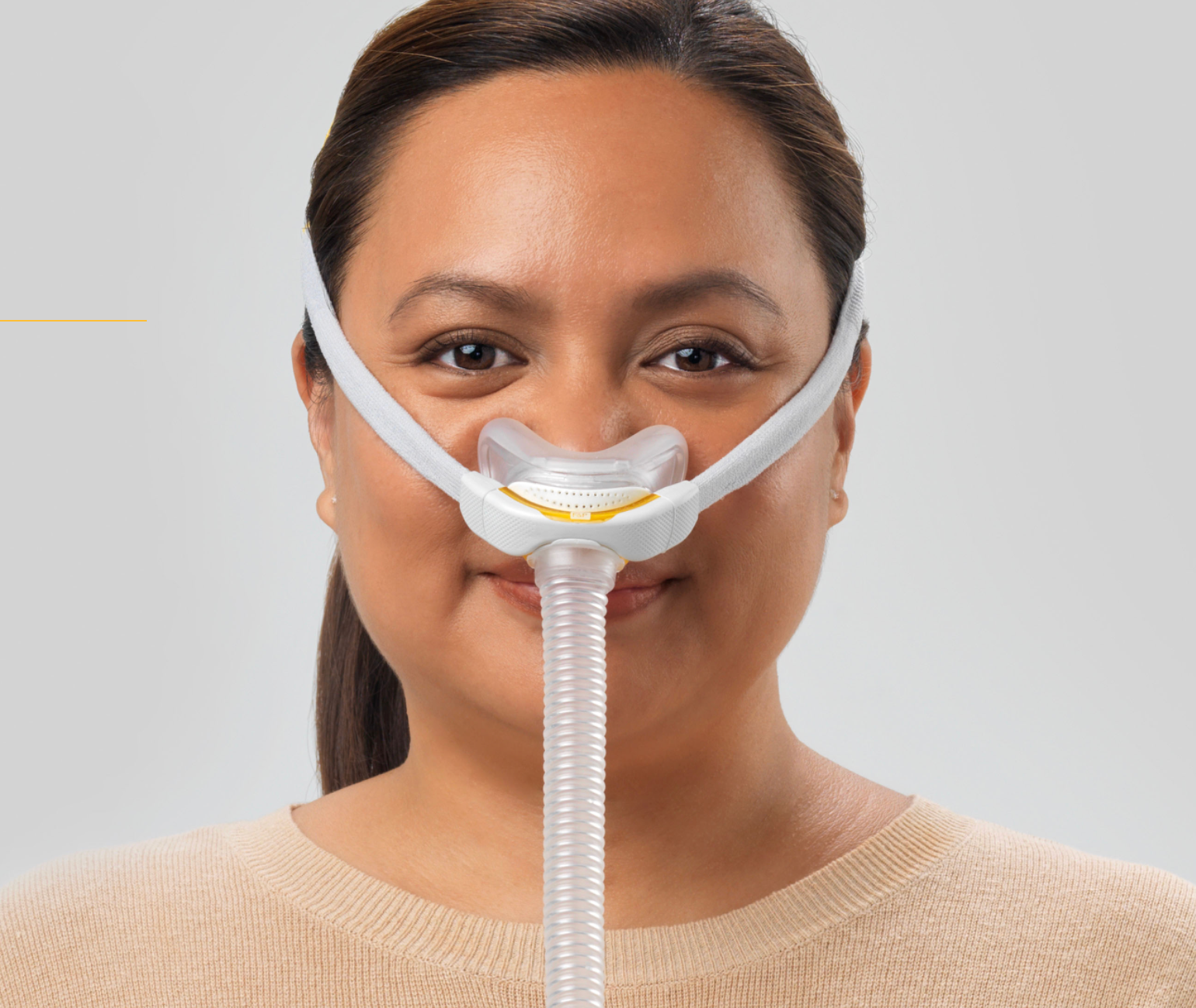
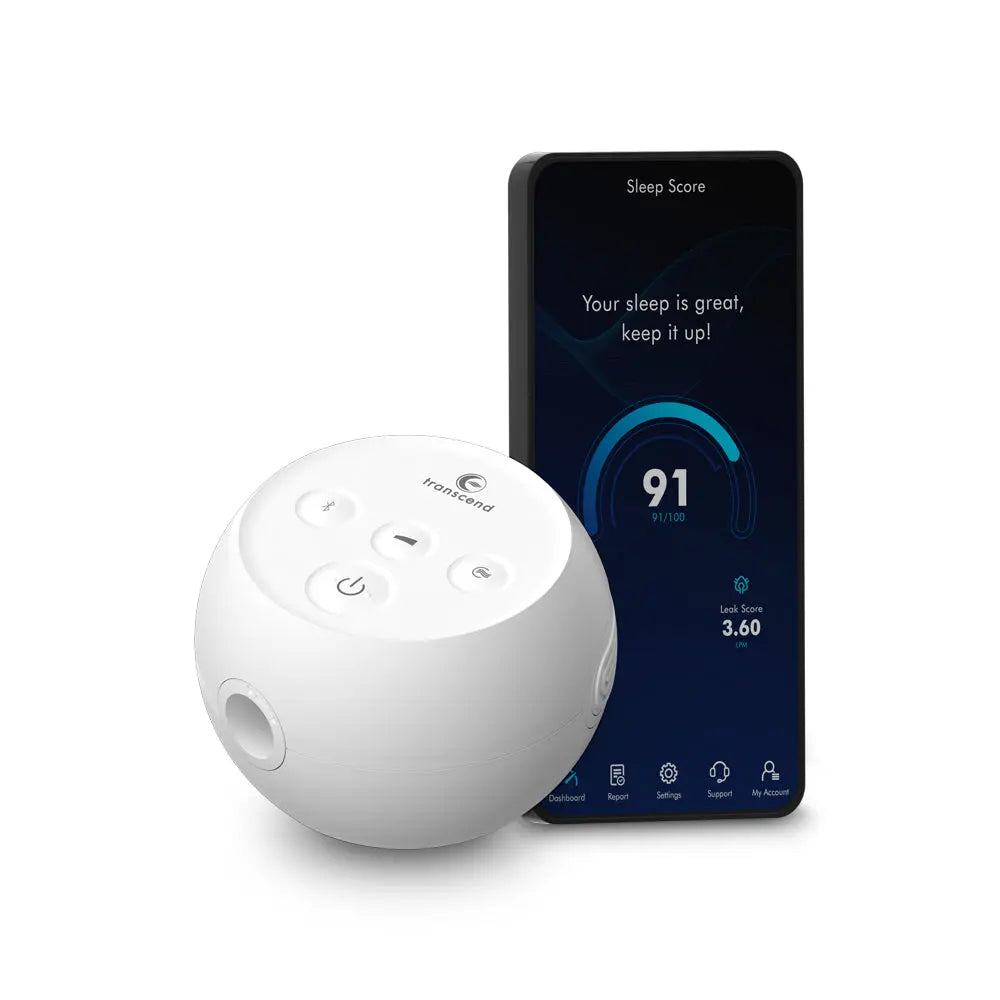
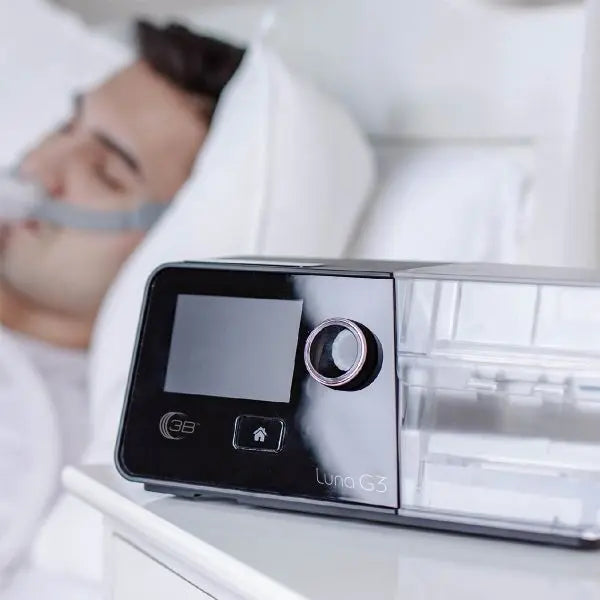


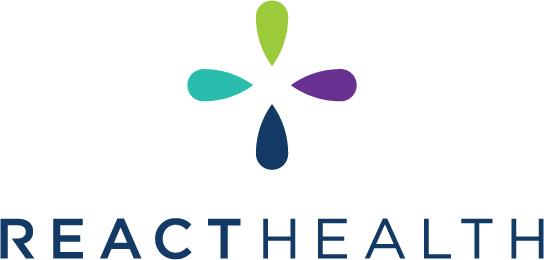
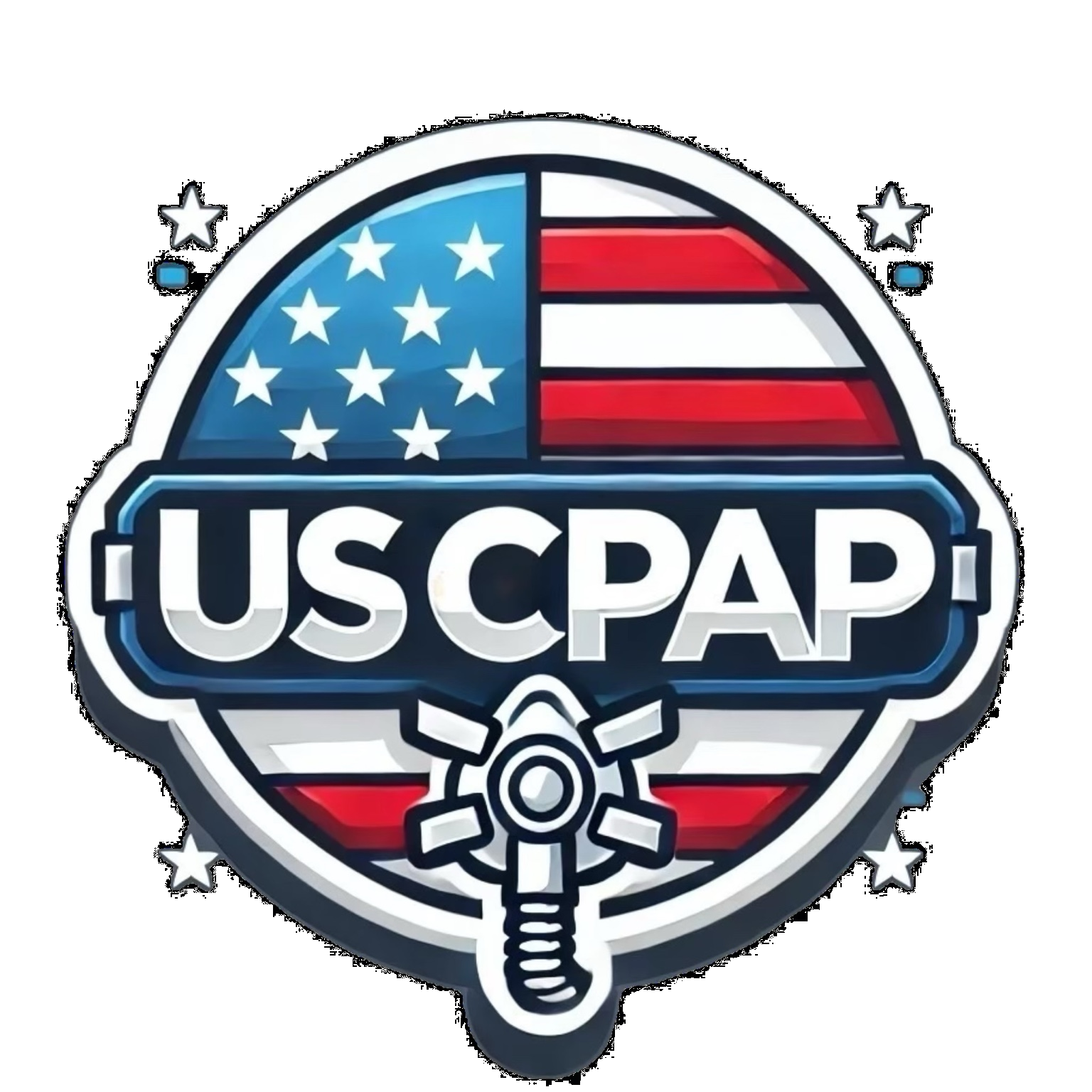
Leave a comment
This site is protected by hCaptcha and the hCaptcha Privacy Policy and Terms of Service apply.